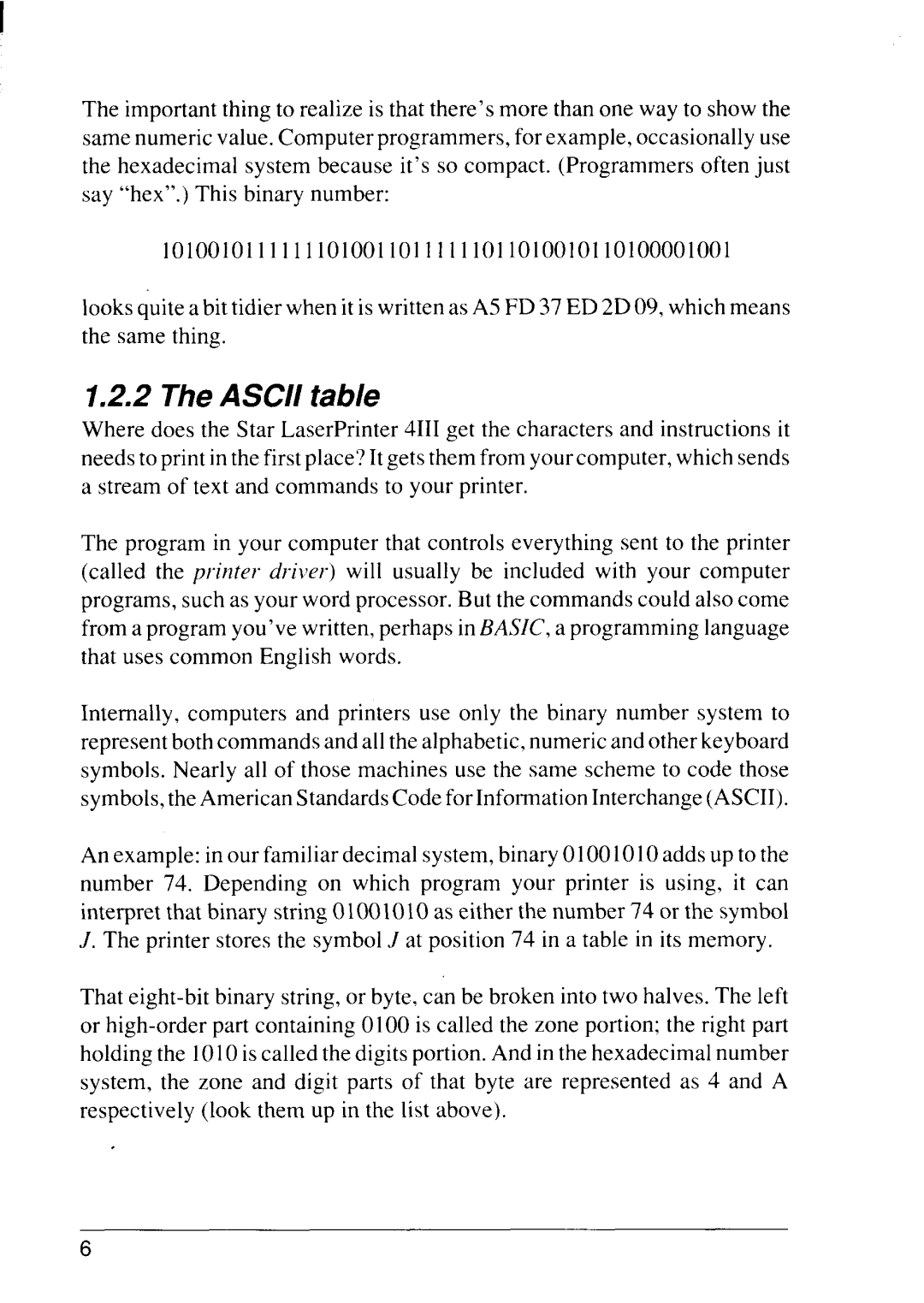
The important thing to realize is that there’s more than one way to show the same numeric value. Computer programmers, for example, occasionally use the hexadecimal system because it’s so compact. (Programmers often just say “hex”.) This binary number:
101001011111110100110111111011010010110100001001
looks quite a bit tidier when it is written as A5 FD 37 ED 2D 09, which means the same thing.
1.2.2 The ASCII table
Where does the Star LaserPrinter 4111get the characters and instructions it needs to print in the first place? It gets them from your computer, which sends a stream of text and commands to your printer.
The program in your computer that controls everything sent to the printer (called the printer driver) will usually be included with your computer programs, such as your word processor. But the commands could also come from a program you’ve written, perhaps in BASZC,a programming language that uses common English words.
Internally, computers and printers use only the binary number system to represent both commands and all the alphabetic, numeric and other keyboard symbols. Nearly all of those machines use the same scheme to code those symbols,the American StandardsCode for Information Interchange(ASCII).
An example: in our familiar decimal system, binary 01001010 adds up to the number 74. Depending on which program your printer is using, it can interpret that binary string 01001010 as either the number 74 or the symbol J. The printer stores the symbol./ at position 74 in a table in its memory.
That
6
